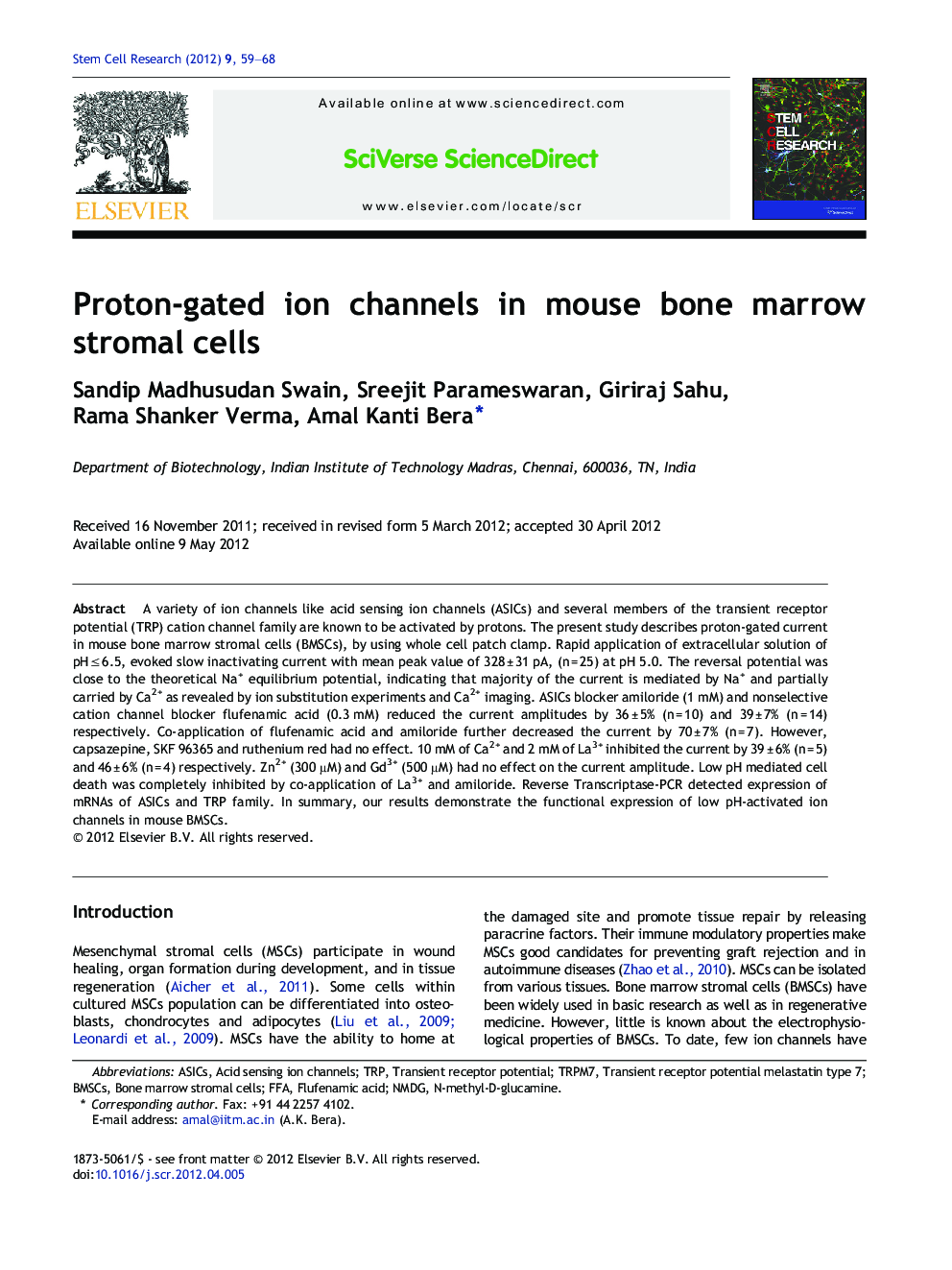| Article ID | Journal | Published Year | Pages | File Type |
|---|---|---|---|---|
| 2094613 | Stem Cell Research | 2012 | 10 Pages |
A variety of ion channels like acid sensing ion channels (ASICs) and several members of the transient receptor potential (TRP) cation channel family are known to be activated by protons. The present study describes proton‐gated current in mouse bone marrow stromal cells (BMSCs), by using whole cell patch clamp. Rapid application of extracellular solution of pH ≤ 6.5, evoked slow inactivating current with mean peak value of 328 ± 31 pA, (n = 25) at pH 5.0. The reversal potential was close to the theoretical Na+ equilibrium potential, indicating that majority of the current is mediated by Na+ and partially carried by Ca2+ as revealed by ion substitution experiments and Ca2+ imaging. ASICs blocker amiloride (1 mM) and nonselective cation channel blocker flufenamic acid (0.3 mM) reduced the current amplitudes by 36 ± 5% (n = 10) and 39 ± 7% (n = 14) respectively. Co-application of flufenamic acid and amiloride further decreased the current by 70 ± 7% (n = 7). However, capsazepine, SKF 96365 and ruthenium red had no effect. 10 mM of Ca2+ and 2 mM of La3+ inhibited the current by 39 ± 6% (n = 5) and 46 ± 6% (n = 4) respectively. Zn2+ (300 μM) and Gd3+ (500 μM) had no effect on the current amplitude. Low pH mediated cell death was completely inhibited by co-application of La3+ and amiloride. Reverse Transcriptase-PCR detected expression of mRNAs of ASICs and TRP family. In summary, our results demonstrate the functional expression of low pH‐activated ion channels in mouse BMSCs.
► We have characterized proton activated channels in mouse bone marrow stromal cells. ► Low pH activated currents are mainly mediated by ASIC1A and TRPM7 channels. ► Flufenamic acid and amiloride blocked the currents partially. ► Activation of these channels by acidic pH induced cell death.
